
-
Sad to see film-makers argue about technique. We're all here to make better films right? Use whatever technique to achieve what you want or you don't, no need to fight.
-
@SightfulProd that's what I like about at P-V. Here isn't really any fights. At one Finnish video forum you cannot even say word "GH2" without fight, because "oldskool professionals" don't see anything good at it.
-
I finally joined here because I was still interested in seeing comparison shots that show the claimed positive difference from shooting with a filter. I've noticed no such difference in my shooting, and nobody has been willing to post a comparison showing a such a difference.
If a discussion moves to a different venue, it makes sense for interested parties to follow. I've been lurking here for many moons, but only now saw a reason to participate.
-
I posted a couple of times in the other thread, and here in this one when I made a quick attempt to see if the method did improve the sampling in the red/blue channels. For me the pain of correction far outweighs any benefit (a benefit which in itself is still inconclusive). I concur that Aki did make some pretty strong claims about curing posterisation with this approach. For me it was never about that, it was about does it actually improve sampling in the red/blue channels. Now, that could arguably improve posterisation, but I'd never expect it to result in it never occuring again. It would though give us more latitude when grading/colour correcting if we had better sampled red/blue channels.
Aki though went on to create and argue for a very specifc workflow, involving specific hacks, specific lenses, specific filters and specific software. A workflow which a lot of us know is unnecessary (and horribly painful when you consider it involves working with stills in batch with silkypix). He also argued for saving our footage as 16 bit Tiff files in order to benefit fully from silkypixs 'virtual raw'. All virtual raw is is the same kind of upsampling that pretty much all of our NLEs, colour correction and compositing tools do. We know that of itself that process does not magically improve our source footage. Sure, interpolation can be done when we upsample from 4:2:0 to 4:2:2 or higher which does improve the channels, and I'd argue that this produces results as good as the benefit of the filter approach. In fact, a good denoising tool does this also. I've noticed a remarkably improvement in the blue/red channels using the wavelet based denoiser in Nuke for example. (edit for clarity: But that is never going to cure banding/posterisation thats already there). There may be arguments for working with, exporting, 16 bit files in a compositing situation and those of us who need to do that know when we need to do it. But frankly, for most situations 12bit DPX is probably overkill when your source is AVCHD (though 10bit can make sense I think), no matter how much you've managed to improve the channels during or after upsampling.
Aki never managed to show an example where he had truly, completely, removed the filters cast from the source footage. Nor have I for that matter, the more I thought about it, the more I Thought that the benefit to pain ratio made it not worth it, and so I decided to stop investigating it.
I can see that it is worthwhile to investigate the positive effect the filter could have on the quality of 4:2:0 source, but everything else Aki is suggesting, to me, makes very little sense and some if it just sounds like snake oil.
-
I initially thought that people were being a little vicious with Aki, but shut the thread down for other reasons. All in all, I was actually very interested in this technique because, contrary to what people here are saying (and agreeing with Aria on theory this theory that) for QUITE some freakin' time people were using a Blue Filter in front of the lens on RED cams to decrease the amount of noise in an image.
Similarly, if you balanced your light to 4400K when shooting the original RED sensor, your images were all MUCH cleaner than tungsten or straight daylight (5600K). I've been shooting RED for a long-damned-time (number 86), a lot has changed. No, you dont' need to do that now, and since then people have learned noise is noise and it'll be there no matter what. Denoise the footage.
However, if shooting through a Magenta or Purple filter offered a specific edge that simply denoising and low ISO, gobs of light couldn't do (banding, for instance) then I wanted to know about it.
I was on the verge of ordering a Magenta filter but could not get a line on which one to buy, so instead I got on with my life and continued my original goal of finishing up lens testing for my 10K feature film.
If someone does test this, please let us see the results. If I could find a magenta filter around here I would certainly try it and report back.
As for people dragging drama from board to board (not the first instance I've seen it), well... I guess you gotta have something to do...
-
Auto WB with filter http://www.mediafire.com/?bg65c8t9b2io556
Auto WB no filter http://www.mediafire.com/?4w5nge1g3vsnw5l
3500k no filter http://www.mediafire.com/?u89vuhu8ioe0gsu
3500k with filter and green n blue sliders moved to top right.
http://www.mediafire.com/?vqw5k6u6c2xfc9k
3500k with filter no other WB adjustment.
http://www.mediafire.com/?5pz5fhu0scd38cp
Shot with 14mm f2.5 panny at 2.5 and various iso and shutter to try and match exposure. Max iso is 400, low iso is 320 and max shutter is around 160, low shutter is 50-60. Can't remember exactly it says on the videos. I also misspoke that WB was 3200k in some of the videos, but it was set at 3500k.
This is a cheap purple cokin style plastic filter so it softens the image a tad vs stock. I only have Vegas Studio not Pro or any color correcting software so those of you with pro NLEs please take a look and tell if you think the red and blue channels look better with filter.
And I agree the whole "virtual raw" workflow is way too much hassle, but outdoors I really like how the filtered footage looks. Just need a proper optical glass filter and to know, EXACTLY how much purple is needed for best results.
FINAL EDIT: Cam used GH1, 14mm Panny, Max Latitude hack.
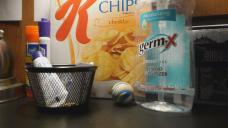
 WBFilterTests.jpg1920 x 1080 - 428K
WBFilterTests.jpg1920 x 1080 - 428K -
@stray "Aki though went on to create and argue for a very specifc workflow, involving specific hacks, specific lenses, specific filters and specific software. A workflow which a lot of us know is unnecessary"
Have you tried the work flow including the camera hack settings and other methods and compared the results to other work flows? You accused me for "creating terminology", even if all of the terminology were direct quotes from the manual of the software that came with the camera. A software which has been tailored spesifically for this camera.
After the material has gone through Silkypix, usually only little curves adjusting is needed to eliminate majority of posterization in the dark hues and finally for best results some dithering is needed, which I have not yet applied properly (film grain) but used a few percent noise as a substitute.
To my opinion there is no need for de-noisers or de-blockers, that help to create the common plastic look. I created and posted a demo video with some very low light scenes with elevated black levels to demonstrate the effectiveness of the work flow, which is a set of filters and software tools that can be tested and used either separately or combined. Majority of the components required can be had free of charge or for very little money, so that's hardly selling a "snake oil".
-
@kholi "I initially thought that people were being a little vicious with Aki, but shut the thread down for other reasons."
You also chose not to communicate with me at all regarding moving the thread or removing some offending remarks, so what were those other reasons? Several people were already testing and using the methods besides myself, and they hoped that the thread could have continued in a less heated environment.
-
@CRFilms Thanks for the samples, I am going to download and look at them next.
-
No I havent tried it, because I know its not necessary, and silkypix is offering nothing over other applications that would make a lot more sense to use. Its also extremely painful, just as one example, can you scrub through your frames to see how your corrections hold up in silkypix ? I'm not interested in continuing this discussion until you show that you actually understand a normal grading/CC workflow, and manage to technically argue rationally how your workflow is better than any other approach. Granted, as I admitted in the other thread 'virtual raw' is silkypixs terminology not yours, but its no different to what any other NLE, colour correction or compositing application does with source material. You say a lot of things such as 'software tailored for the camera' and don't ever back them up with a proper technical explanation (neither does the silkypix documentation). So, thats why some people like myself don't take you seriously. If you had just stuck to testing the efficacy of the filter on the red/blue channels after correction you wouldn't have had so many people challenging your ideas. Are you not suggesting specific lenses now ? Or specific hacks ? I use a GH2 so I can't play along with the specific hacks, and I've no intention of buying lenses to test your workflow either.
Saying that there is no need for denoisers or deblockers at all, is just ridiculous and shows a lack of experience to me. Your demo still has a purple cast after correction, and I see no additional detail or lack of noise in the elevated blacks over other footage shot normally. Again, as others have requested, shoot proper comparisons in controlled conditions. Also, compare at least one other accepted workflow to yours and post the results of both. How do you expect any of us to take it seriously if you haven't done, and provided, these basic comparative tests (as your shot of the guy in the orange hoodie proves, posting stills is not enough). Until you can completely remove the purple cast any comparisons are pointless as you've not managed to achieve a baseline for comparison. Your opinions are your opinions, if people agree with you and have the time to follow your workflow, and believe in your workflow, then fair enough. Just accept that I won't.
I didn't use the term snake oil to mean you're selling something (as in cash money), but you definitely seem to be selling an idea with statements that have no real technical basis.
-
@Stray "because I know its not necessary"
Just like some people said that there is no need for new hack settings for the GH13. But there was and the need only became apparent while working on this. So either my eyesight improved, or the material improved.
-
@nothing "Can you tell me where you see an improvement? I've just spent some time watching these files back to back several times on a calibrated Panasonic IPS and I can't see where the filter improves anything."
Let's see, files AWBnoFltr.MTS and AWBwFltr.MTS happen to be of the same length to the frame, 9 seconds 11 frames.
Comparison of file sizes:
AWBnoFltr.MTS 19,630,080 bytes
AWBwFltr.MTS 20,330,496 bytesConclusion: filtered version is the larger file, thus contains more data. What could that data be now?
Comparison of recorded levels: (see image attachment)
Conclusion: filtered version has flatter contrast and dark hues have been pushed upward on the scale, thus containing more color information with better precision.
This is getting pretty conclusive, don't you think? Thank You CRFilms for taking the time to do the test.
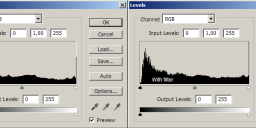
 levels.png810 x 300 - 15K
levels.png810 x 300 - 15K -
@stray "You say a lot of things such as 'software tailored for the camera' and don't ever back them up with a proper technical explanation (neither does the silkypix documentation). So, thats why some people like myself don't take you seriously."
Says on the Panasonic Silkypix front page: "Development and Adjustment of JPEG / TIFF Files
This utility converts data into a form that is close to RAW data and then re-applies the development processing. This ensures accurate color processing.*"
http://panasonic.net/avc/lumix/silkypix/index.html
To do that would mean that the software has parameters to know how a jpeg taken with this camera should look like, had it been taken as RAW. It requires a software spesific to the camera and not some random generic software.
-
"software has parameters to know how a jpeg taken with this camera should look like , had it been taken as RAW" . Christ on a bike. Please stop talking to me. It would take a very long time to unpick everything thats wrong with that sentence.
I wish you luck in your workflow, but please stop trying to correct or inform me. Please. I don't care, I'm very happy with my obviously crappy Premiere, Nuke and Scratch workflows and my poor understanding of digital video. I'm not going to change. Give up on me.
-
@CRFilms thanks for the good test files, I've had a quick play with the Auto WB files. The maximum and minimum luminance of both shots, with and without the filter, are pretty much identical. Anyway in Nuke I used a colour lookup node based solely on remapping the average intensity of both shot, and then I've used the match grade plugin. I'm trying to keep it as simple as possible here. Still not got a perfect correction though (check the shadows, the bottle reflection/diffraction and the wood), but this is as good as I can get without doing an awful lot of remapping and further correction. I think though its good enough to decide if you think this approach is worthwhile.
While there does on first glance seem to be a noticeable benefit to the blue channel its actually not that good, in fact the blue channel isn't 'right', check the text on the cereal. Therefore you still have to say that what I'm posting is still inconclusive. In terms of the lack of blockiness/noise then yep, I think thats the case, but good denoising would sort that and would also result in smoother, interpolated red & blue channels anyway. I'll go further and say its actually having a negative effect, it isn't improving the sampling of the blue or red channel at all in terms of retaining colour information (not noise, noise does seem to be reduced), quite the contrary in fact. As for if it helps with posterisation/banding you can't tell from this shot, but I'm doubting that too now. I think what @lpowell and @driftwood are doing with changes to the encoders matrix is having more of a positive effect to how colour is encoded than this approach is (until we get to alter film modes).
There is an imperceptible flicker caused by the light in this shot, so the average intensity is changing. This means that whatever solution you use to remove the filters cast is probably going to have to be adaptive. This will be true of shots in natural light too. As I and others said, to do this properly you are going to have to use a LUT for the correction based on good filtered/unfiltered shots of a colour chart in studio conditions where you are absolutely sure that you are covering the cameras entire dynamic range. Even then thats not only going to be specific to the filter, but to the lens used and the film mode. I also think that although it would give much better results in terms of removing the filters cast it still won't be perfect. As we all have enough issues getting accurate colours as it is, and this is just adding to that issue I can't see any point in it. Sure I could maybe just stop correcting out the filter now and go for the grade I want, but I'll be dealing with additional, (and to me anyway, counter-intuitive) colour problems.
Edit : Forgot to say, yes, the image appears to be softer, maybe thats the filter. Or it could be the matchgrade node, I really distrust that thing.
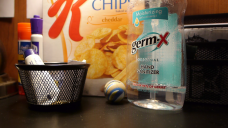
 nofilter_full.png1920 x 1080 - 2M
nofilter_full.png1920 x 1080 - 2M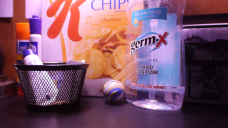
 filteruncorrected.png1920 x 1080 - 2M
filteruncorrected.png1920 x 1080 - 2M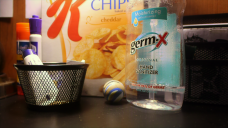
 corrected_full.png1920 x 1080 - 3M
corrected_full.png1920 x 1080 - 3M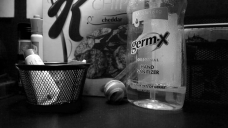
 nofilter_blue.png1920 x 1080 - 843K
nofilter_blue.png1920 x 1080 - 843K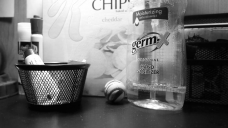
 nofilter_red.png1920 x 1080 - 815K
nofilter_red.png1920 x 1080 - 815K
 corrected_blue.png1920 x 1080 - 875K
corrected_blue.png1920 x 1080 - 875K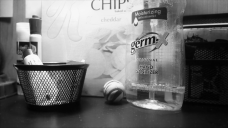
 corrected_red.png1920 x 1080 - 874K
corrected_red.png1920 x 1080 - 874K -
@Stray I've wondered if the filter is really necessary indoors in controlled lighting since, to me, proper exposure and lighting is ultimately more important than grading so I don't think I'd ever do the filter method indoors, but I personally do like how it looks outdoors. I'm going to do a outdoors test next shooting some bushes and I'll use a cheap ND filter to try and match the softness of the purple filter.
-
In the files that I compared above the filtered version contains 3.6% more data despite being slightly softer. I don't see what else that could be other than the beefier colors. The filter modifies the contrast both indoors and outdoors.
I've known about this all along, because I kept monitoring the bit rates. Bit rates fell when I removed the filter and went up with the filter. I tuned the current 25p iW settings so that they remain on the edge. Without filter the settings record in all situations, with filter I get occasional write errors. I am going to publish my own measurements later, there is more to do right now than just to win an Internet argument.
-
@stray "I think what @lpowell and @driftwood are doing with changes to the encoders matrix is having more of a positive effect to how colour is encoded than this approach is (until we get to alter film modes)."
Your thinking is incorrect, because the filter is a pre-capture filtration and as such can not be duplicated in software. No changes in the software will modify the sensor in the camera or alter the ratio of the channel data to be captured. Besides the filter other alternative is to color the lights used to illuminate the subject, hardly a practical solution.
Stray, you are mixing pre-capture and post-capture which are two separate points of data manipulation. I think lpowell does that too, he was rather confused about it in the deleted thread. What I'm saying is that I would not be too optimistic about hack settings eliminating banding and posterization.
-
@aki_hartikainen - "I think lpowell does that too, he was rather confused about it in the deleted thread."
I think it's quite clear where the original source of confusion lies.
-
@lpowell Did you look at the MTS files I provided and illustrated in the other thread? Is it possible to get any more compression out of the 25p iW GOP-2 settings for GH13?
-
@zcream Color is one third of the data (4 + 1 + 1), so 3.6 units more to 33.3 is10.8% more color to grade. Still insignificant? What about the higher and more precise black levels?
zcream, I made a question for you in the previous page. Why not answer that before continue with various demands and claims about "claims"? Just a suggestion, of course.
-
Please try not to lead this topic into conflicts.
I am really sick of al this claims, demands, etc.
Howdy, Stranger!
It looks like you're new here. If you want to get involved, click one of these buttons!
Categories
- Topics List23,990
- Blog5,725
- General and News1,353
- Hacks and Patches1,153
- ↳ Top Settings33
- ↳ Beginners256
- ↳ Archives402
- ↳ Hacks News and Development56
- Cameras2,367
- ↳ Panasonic995
- ↳ Canon118
- ↳ Sony156
- ↳ Nikon96
- ↳ Pentax and Samsung70
- ↳ Olympus and Fujifilm101
- ↳ Compacts and Camcorders300
- ↳ Smartphones for video97
- ↳ Pro Video Cameras191
- ↳ BlackMagic and other raw cameras116
- Skill1,960
- ↳ Business and distribution66
- ↳ Preparation, scripts and legal38
- ↳ Art149
- ↳ Import, Convert, Exporting291
- ↳ Editors191
- ↳ Effects and stunts115
- ↳ Color grading197
- ↳ Sound and Music280
- ↳ Lighting96
- ↳ Software and storage tips266
- Gear5,420
- ↳ Filters, Adapters, Matte boxes344
- ↳ Lenses1,582
- ↳ Follow focus and gears93
- ↳ Sound499
- ↳ Lighting gear314
- ↳ Camera movement230
- ↳ Gimbals and copters302
- ↳ Rigs and related stuff273
- ↳ Power solutions83
- ↳ Monitors and viewfinders340
- ↳ Tripods and fluid heads139
- ↳ Storage286
- ↳ Computers and studio gear560
- ↳ VR and 3D248
- Showcase1,859
- Marketplace2,834
- Offtopic1,319








